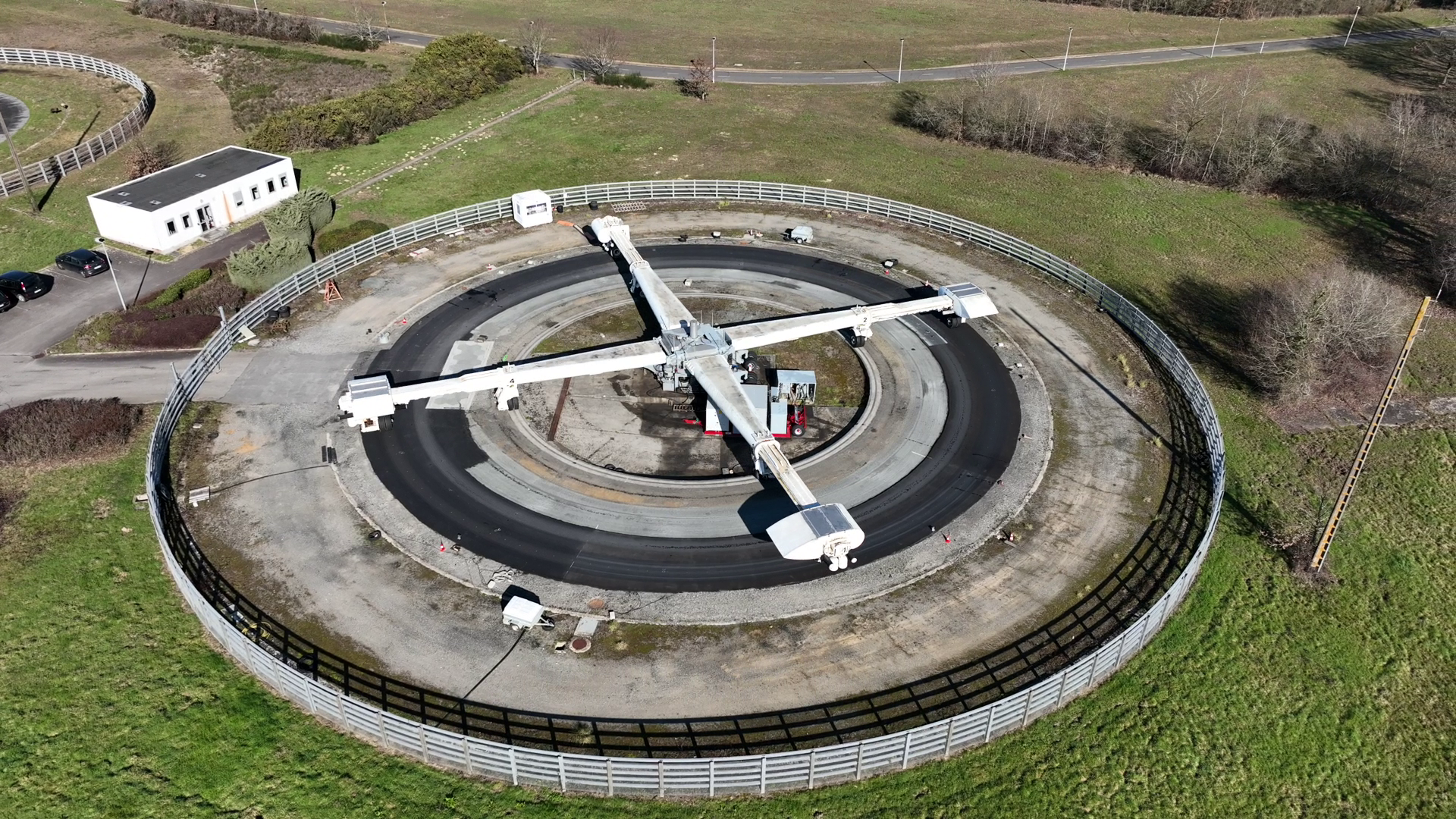The NEMO-project has shown how new types of pavements can not only reduce noise emissions, but also help combat other environmental threats. Innovative asphalt mixtures have been developed to target a threefold of environmental impacts from on-road vehicles emissions, including noise, exhaust gases and microplastics coming from tires’ wear and tear. The mixtures have been tested in urban and peri urban conditions. The asphalt mixtures also present very good mechanical performance.

Holistic pavement solutions
The ability of a road surface to mitigate traffic noise emissions depends on weather conditions, fleet composition and traffic conditions. A new collaboration between the University of Cantabria, the Dutch company M+P and Gustave Eiffel University in France, have enabled the design, testing, characterization and monitoring of the pavement’s mechanical behaviour over its entire service lifetime. The design of the asphalt mixtures was carried out based on previous research on tire/road interaction models.
The test of innovative asphalt mixtures has shown significant reduction in tire-road noise and particle retention capacity. These advances are without major deviations in terms of durability or skid resistance compared with a conventional pavement. As far as industrial production and paving operations are concerned, it has been demonstrated that previously established techniques and procedures can be used, with some additional equipment and precautions, as well as more regular checks during the process.
Europe’s’ largest mechanical arms testing innovative pavements
The innovative pavements durability and long-term mechanical performance has been tested in a huge Accelerated pavement testing (APT) facilities the Gustave Eiffel University in Nantes – one of the largest facilities of its kind in the world. By rotating huge mechanical arms over the asphalt surface, you can simulate the mechanical behaviour of pavements and wear equivalent to 30 years of heavy vehicle traffic (or over 1,000,000-wheel passes) in just a few months. Furthermore, by adjusting the speed of the arms (up to 100 km/h), the durability of different types of roads can be assessed, including local road network, through roads, peri-urban roads, rural roads, tourist routes, etc.
The experiment was conducted between December 2022 and August 2023 and simulated urban and peri-urban road traffic conditions. This enabled the mechanical durability of the innovative mixtures to be assessed over a wide range of temperatures and weather conditions, from sub-zero temperatures and rainy periods to summer heatwaves. The temperature of the asphalt exceeded 55°C, which also allowed us to assess the durability of the pavements in the context of global warming.
Prior to the APT test, real-life performance of the innovative asphalt mixtures was conducted on an urban road of the municipality of Florence. The new road pavement has provided excellent acoustic performance 7 months from the laying of the new pavement with significant reduction in noise levels.
Data analysis
The data obtained is robust and cover changes in the bearing capacity, density, porosity, vertical and lateral deformations, etc. of the various pavement layers. The data from the Accelerated pavement testing is accompanied by visual and/or instrumented observations of pavement surface condition: presence of fractures, stripping, rutting, etc.
The tire/road interaction model applied for the acoustic design of the mixtures allows calculating the mechanical loss in the rolling tire. Through a design process, the optimal combination of high noise reduction and low rolling resistance was defined for two different fleet composition and traffic conditions, one specific for urban areas and one specific for peri-urban roads.
Pollutants and microplastics
In the case of exhaust emissions, in addition to the work on texture, the use of photocatalytic materials has been proposed for the urban mixture, which are able to convert the toxic substances emitted by cars into substances that are less harmful to the environment and to health. The photocatalytic material selected was analysed in the laboratory and placed in a section of the APT in Nantes to evaluate the evolution of its durability and efficiency.
With regard to microplastics, the aim was to design mixtures with a large pore-network for peri-urban areas where there are no water treatment systems, and to evaluate the ability of these mixtures to retain microplastics. To this end, an initial analysis was carried out in the laboratory, followed by more real samples taken at the APT.
Take-aways from the experimental design
- Test have shown significant reduction in tire-road noise. This will improve the quality of life for citizens and pedestrians in the area.
- In terms of exhaust emissions, the texture of the roads has been adjusted to minimize the rolling resistance of the car, which is expected to reduce exhaust emissions.
- Both asphalt mixtures seem to allow- the collection of more particles than conventional dense mixtures at the beginning of their lifetime (1 to 3 years), but thereafter this effect is reduced.
- The mechanical behaviour has been analysed at full scale, without showing any differences with the reference mixtures normally used on each type of road.
- The innovative asphalt mixtures require high quality materials. Despite the fact that the manufacturing costs might be higher for some use-cases (peri-urban mixtures) the positive effect of the environment and the health of neighbours, means a positive economic impact in global terms.
Further scientific developments
Research into reducing emissions of road-related microplastics into the environment has only just begun. Much research remains to be done in this area as there are still many uncertainties, but steps are being taken in the right direction to achieve such a reduction.
The next step is to further test the mechanical behaviour and maintenance of the pavements’ ability to reduce noise and collect dust and micro-plastics in real-life conditions or by constructing real pavements in urban or peri-urban areas. A long-term monitoring program on several road section in different circumstances will help determine noise emissions and rolling resistance/fuel consumption over time. Road maintaining authorities are usually sceptical for applying porous asphalt due to the shorter lifetime.
New tests can explore the acoustic ageing of the mixture in a real situation and including the resilience of these pavements to climate change, as well as the resistance of their structure to frost. Cross-sectorial cost benefit analysis can also test the hypothesis that noise reducing pavements are by far the cheapest noise abatement measures, despite of the earlier replacements of the surface.
An important issue is also the recycling and circularity of road materials, further research will show if the top layers developed are usable for recycling. Last but not the least, further exploration on the potential of porous asphalt to collect microplastics is important. Data shows that 30% of microplastics in oceans are tire-born. And solutions are needed close to the source of this major environmental problem. For example, in the Netherlands where more than 90% of the highways are covered with porous asphalt, the run-off of microplastics has decreased with a factor 20.
What should cities start working on?
Cities could start exploring new asphalt pavements in residential areas where it is not possible to remove cars from circulation. This will considerably reduce the impact of noise and exhaust gases generated. Pavements also need to be properly maintained to ensure the durability of the improvements made.
A holistic approach from public organizations will emphasize the combined solutions of new road pavements. A road surface can lower the noise, the exhaust emissions and decrease the microplastics that run off and ends-up in our aquatic environment. In a lot of public organisations, the responsibilities for road maintenance and the addressing of environmental issues are strictly separated. Budgets for noise abatement can be used for road maintenance, not only for laying a new noise reducing asphalt, but especially for maintaining them.
To get more information, read the report of the innovative asphalt test available here.
Contact persons from the collaborating partners:
Juliette Blanc and Bogdan Muresan, Gustave Eiffel University
Irune Indacoechea-Vega, Pedro Lastra-González or Daniel Castro-Fresno, University of Cantabria
Ronald van Loon, Christiaan Tollenaar, Bert Peeters, M+P
More of this

